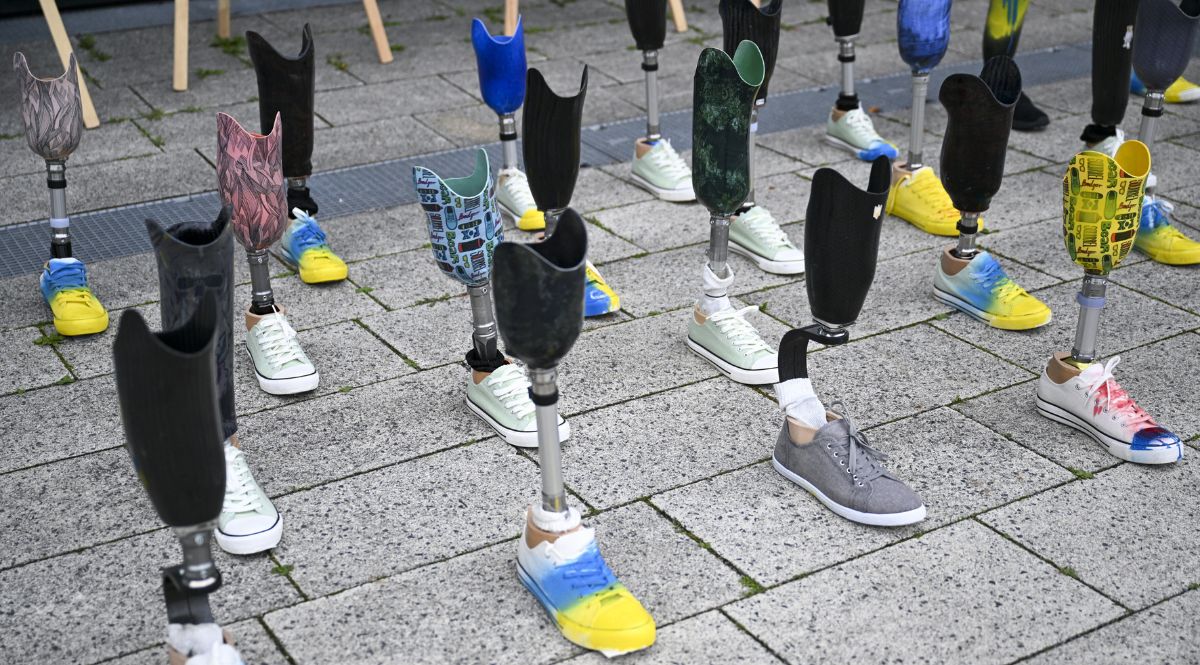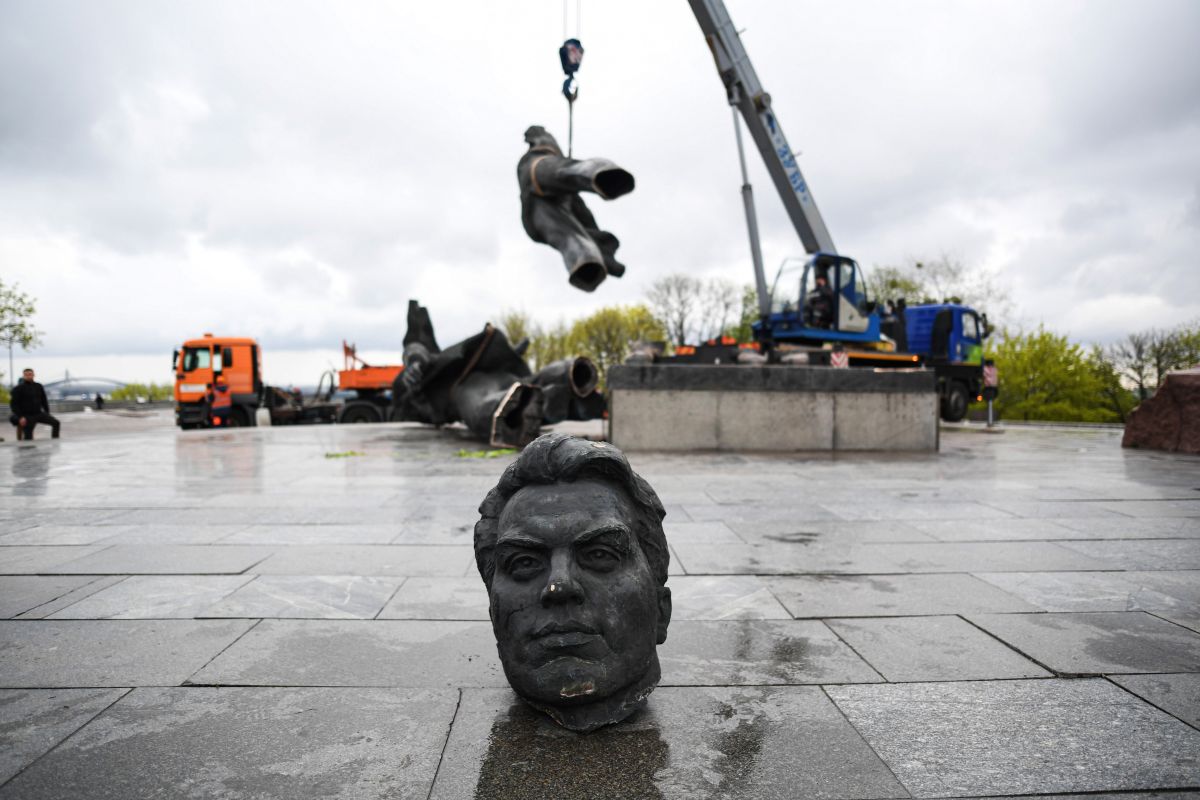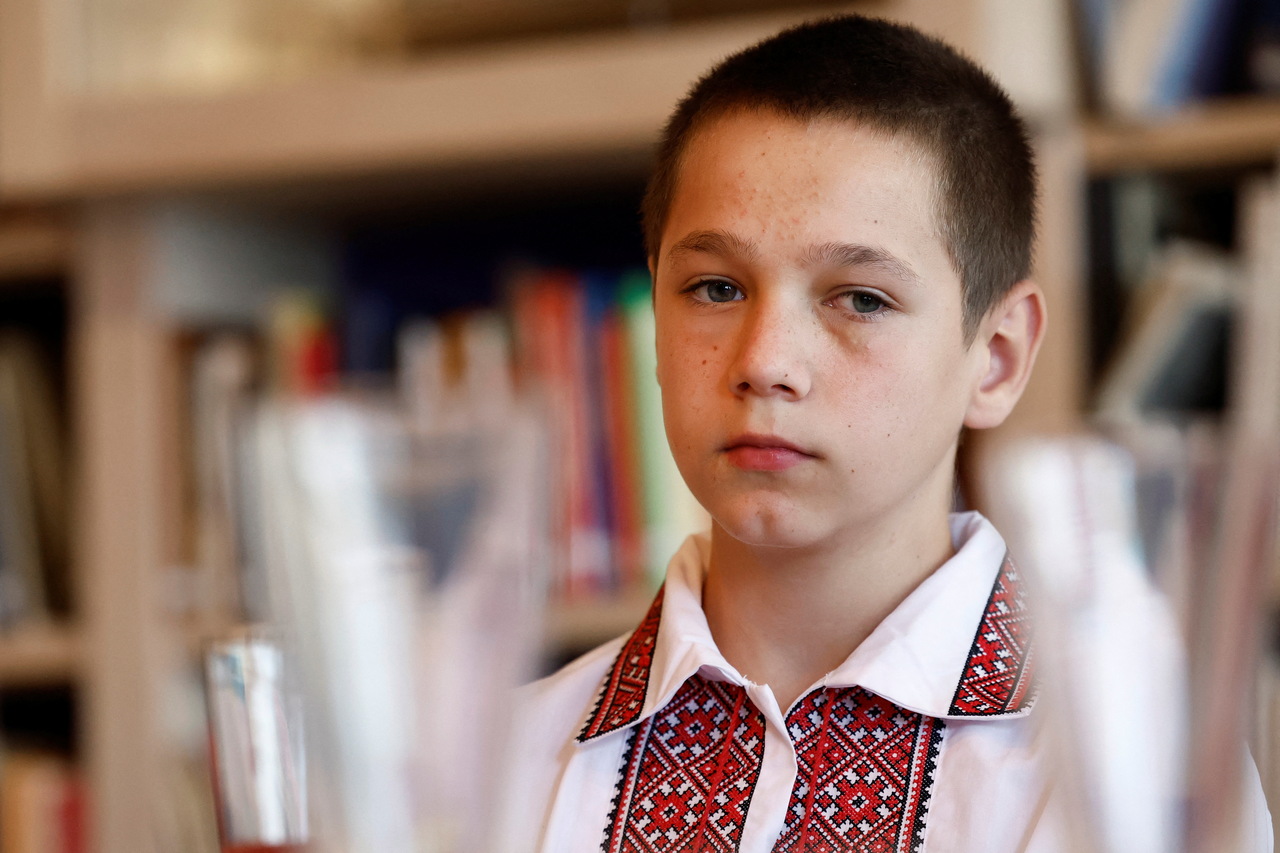Ukraine Facing Multiple Socio-Demographic Challenges
The demographic situation, refugee movement, and the mobilisation of men of working age are some of the most important challenges for the stabilisation of the Ukrainian economy and, in the future, the reconstruction of the state. As a result of the war, socio-demographic changes are taking place in Ukraine that already have and will have significant consequences for, among other things, the labour market. Social problems (e.g., poverty and homelessness, large numbers of people with health problems) will also intensify, which will not only hinder the functioning of the state but also will manifest among Ukrainian refugees in Poland.
 AA/ABACA / Abaca Press / Forum
AA/ABACA / Abaca Press / Forum
Demographic Situation
The Russian invasion accelerated the demographic collapse of Ukraine. At the beginning of 2022, the population of Ukraine was about 41 million, which was 10 million less than in 1991 (data from the State Statistics Service of Ukraine). At present, it is impossible to determine the precise number of Ukrainian residents. Figures range from 37 million (the figure given by the United Nations Population Fund) to 25 million people (the lowest estimate by Ukrainian demographers).
The war has aggravated pre-existing problems such as migration and low fertility rates. At least 6.5 million refugees, mostly women and children, have fled to the European Union and other Western countries. However, the number of Ukrainians who have been forced to go to Russia or have gone there of their own free will (this includes people living in occupied territories) is unknown, but most likely around 1.3 million Ukrainian citizens in total. The exact number of Ukrainian civilian losses is also unknown. Although official UN figures give almost 11,000 dead, this figure is far from reality: in Mariupol alone, according to AP News estimates, between 25,000 and 75,000 people were killed. Ukrainian losses among military personnel are also not officially reported. Ukrainian President Volodymyr Zelensky mentioned a figure of 31,000 dead in February this year, but figures resulting from journalistic investigations range from 70-100,000.
The warfare, the uncertainty of the situation, the separation of families resulting from refugee movement and mobilisation have further aggravated the already low rate of natural increase. In the history of independent Ukraine, the total fertility rate (TFR) has never reached replacement level (2.1-2.2). Almost 90,000 fewer children were born in 2023 than in 2021. (187,000 compared to 273,000). Due to the lack of recent statistics, it is difficult to calculate the current TFR, but estimates suggest that it may be as low as 0.7.
Main Social Issues
War losses include not only those who have been killed but also those who have been injured as a result of warfare. UN statistics state that such (civilian) persons number about 21,000, but, as in the case of those killed, it will not be possible to determine their precise number until the end of hostilities. The same is true for military personnel, where the number of casualties is estimated at 120,000. Some of these people will face varying degrees of disability for the rest of their lives.
The health problems of the population are already—and will remain in the future—a major challenge for the Ukrainian state and the health and social welfare system. Problems with war trauma and post-traumatic stress disorder (PTSD) may even affect the majority of the population. Currently, WHO estimates that around 10 million Ukrainians experience psychological problems, including PTSD, anxiety, and depression, as a result of war. The war has also had a devastating impact on Ukraine’s healthcare system—for example, due to mobilisation, there is a shortage of medical staff and many facilities have been destroyed, further hindering effective state assistance.
A major challenge for Ukraine is internally displaced persons (IDPs). The official number of people registered as displaced persons is around 4.8 million, but the actual number may be up to 2 million more. This group is particularly at risk of poverty and homelessness. Research by the International Organisation for Migration indicates that only half of them have a job or other regular income (e.g., a pension), and 65% currently live in households with a per capita income of no more than the subsistence level. Ensuring continuity of education for refugee children also remains a challenge, exacerbated by the fact that for some this is another year of online education (previously due to the COVID-19 pandemic).
The war is encouraging the militarisation of society, backed by Ukrainians: there is growing acceptance of the right to own handguns, and in a March 2024 Razumkov Centre survey, almost 75% of respondents indicated that they would approve of, for example, the introduction of military-patriotic education from kindergarten onwards. According to estimates by the Minister of the Interior Ihor Klymenko, Ukrainians may currently own up to 5 million weapons without proper registration, not including grenades. While the militarisation of society strengthens resilience against Russian threats, in the long term this process may have negative consequences. The large number of veterans with war trauma and the widespread access to weapons may turn into an increase in crime and destabilisation of the internal situation. Due to the experience of war, radicalisation of demobilised people is also possible, which will be a challenge for the Ukrainian state regardless of how the war ends.
Labour Market and Financial Remittances
The war is also changing the labour market in Ukraine. Most of the large enterprises in the east have been destroyed. In total, it is estimated that around 30% of jobs have disappeared. At the same time, the number of people of working age has also decreased by around 30%. Although the IT sector is actively growing, most workers are missing from industry and construction. These are people who stayed abroad after the invasion or were mobilised. At the beginning of this year, unemployment in Ukraine was estimated by the National Bank of Ukraine at 18%, but it is falling for statistical reasons: the number of jobs is increasing, while the population of working age continues to decrease due to further emigration, mobilisation, or the need to adapt internally displaced persons.
Ukrainian refugees and pre-invasion economic migrants, although absent from the Ukrainian labour market, are important for sustaining the Ukrainian economy. In 2023, financial remittances from abroad reached $11.3 billion, equivalent to more than 5.3% of Ukrainian GDP. Financial remittances since the Russian invasion have been important for Ukraine's financial resilience and stimulate the economy, as most of them are for consumption.
Prospects for Ukraine
The ongoing depopulation of Ukraine will be difficult to stop. Not only will the number of people living in Ukraine shrink but also there will be an even more rapid ageing of the population and its feminisation—life expectancy for men was already about 10 years shorter than for women, and will now, due to mainly men’s involvement in the war, decrease further (estimates indicate a difference of about 13 years).
Socio-demographic changes, as well as the devastation of the war, have already resulted in a change in the labour market model and the geographical structure of the economy in Ukraine (increasing digitalisation, loss of large companies in the east, relocation of some companies to the west of Ukraine, population movement). Women are becoming increasingly important in the labour market, taking up jobs previously considered “male”. The challenge will be to adapt the labour market to the large number of people with disabilities.
Implications for Poland
Both the Ukrainian and Polish labour markets will see an increasing demand for workers in the construction, medical, and care services sectors. Both countries will compete for Ukrainian workers, which may foster increased tensions in bilateral relations. At the same time, due to the large number of refugees, some of the social problems will be visible in Poland, which will hinder further integration of Ukrainians and may be a burden on the Polish social and health care systems. This may mainly concern demobilised men who will come to Poland in search of work and for family reunification. There may be a risk of radicalisation of this group and a risk of increased criminality. This will translate into increased social conflicts and attempts by Russia to exploit this situation to generate tensions in Polish-Ukrainian relations.
On the part of the international community, including Poland, it will be necessary to increase assistance to Ukrainian society. In particular, support will be required for those dealing with the traumas of war, such as the demobilised and those coming from the frontline regions. It will also be important to assist in the social reintegration of veterans and internally displaced persons.




(1).jpg)
